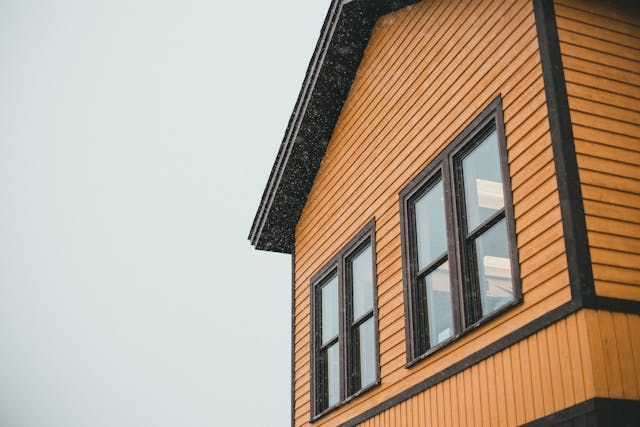Homeowners in Washington state know that the weather can be unpredictable. From rainy seasons to occasional snowfall, the exterior of your home takes a beating. Your siding is one of the first lines of defense against these elements. Keeping an eye on its condition can save you a lot of trouble down the road. How can you tell if it’s time to replace your siding? There are several signs that can indicate your siding isn’t holding up as well as it should. Paying attention to these signs can help you decide if it’s time to invest in new siding this year.
1. Visible Cracks and Gaps
One of the most obvious signs that your siding needs replacing is the presence of visible cracks and gaps. These openings can allow water to seep into the structure of your home, leading to serious issues like mold and mildew growth. In Washington, where rain is frequent, this can quickly become a major problem. Moisture infiltration not only damages the siding but can also weaken the walls and insulation beneath. If you notice cracks or gaps in your siding, address them right away to prevent further damage and maintain the integrity of your home.
2. Warping or Bubbling
Warping or bubbling of your siding is another clear indicator that it’s time for a replacement. This often happens when moisture gets trapped under the siding, causing it to expand and lose its shape. In WA siding can become warped or bubbled due to the damp climate conditions in the region. This doesn’t just look bad; it also fails to protect your home effectively. The distorted panels can create gaps and weak points where water can enter, leading to more extensive damage over time.
Hiring professionals to replace warped or bubbled siding will ensure your home is properly sealed and protected from the elements.
3. Fading and Discoloration
Over time, the sun’s UV rays and harsh weather can cause your siding to fade and lose its original color. While some fading is normal, significant discoloration can indicate that the siding material has degraded and is no longer providing adequate protection. In Washington, where homes are exposed to varying weather conditions, this can happen faster than you might expect. Faded and discolored siding not only diminishes your home’s curb appeal but also suggests that the material may be brittle and prone to further damage. If your siding has lost its vibrancy, it might be time to consider a replacement to keep your home looking fresh and well-maintained.
4. High Energy Bills
If you’ve noticed a sudden increase in your energy bills, your siding might be to blame. Siding plays a crucial role in insulating your home and keeping the interior temperature stable. Damaged or outdated siding can allow heat to escape during the winter and let it in during the summer, making your HVAC system work harder to maintain a comfortable temperature. This is particularly important in Washington, where temperatures can vary widely. Replacing your siding with more energy-efficient materials can help reduce your energy costs and make your home more comfortable year-round.
5. Frequent Maintenance
Needing to frequently repair or repaint your siding is a sign that it’s reaching the end of its lifespan. Constant maintenance can be both time-consuming and costly. In Washington’s wet and windy conditions, siding that requires frequent upkeep is not ideal. Modern siding materials are designed to be low-maintenance and durable, saving you time and money in the long run. If you find yourself constantly fixing or painting your siding, it’s worth considering a replacement. Investing in new, low-maintenance siding will give you peace of mind and reduce the ongoing costs associated with keeping your home’s exterior in good shape.
6. Interior Wall Damage
Sometimes, the signs that your siding needs replacing can be found inside your home. If you notice peeling paint or wallpaper, it could indicate moisture is seeping through your siding. This is a serious issue, as water infiltration can damage the walls, insulation, and even the electrical systems in your home. In Washington’s wet climate, interior wall damage is a common consequence of failing siding. By addressing the exterior problem promptly, you can prevent costly repairs to the interior of your home. Keeping an eye on your interior walls can provide early warnings that your siding isn’t doing its job.
7. Pest Infestation
Damaged siding can create entry points for pests, such as insects and rodents, to invade your home. In Washington, where the natural surroundings can be quite lush, pests like termites, ants, and even mice are common. These unwelcome guests can cause significant damage to your home’s structure and create health risks. If you notice signs of pest infestation, like small holes in the siding or increased pest activity, it’s a strong indication that your siding is compromised. Replacing your siding can seal these entry points and protect your home from further infestations.
8. Outdated Appearance
While functionality is crucial, the appearance of your siding also plays a significant role in your home’s overall appeal. If your siding looks outdated or worn, it can detract from your home’s curb appeal and value. In Washington, where homes often feature beautiful, natural surroundings, having a visually appealing exterior is important. New siding can provide a fresh, modern look that complements your home’s design and the local environment. Updating your siding can boost your home’s aesthetic appeal and make it a more attractive place to live or sell.
Conclusion
Maintaining your home’s exterior is essential, especially in Washington’s diverse and challenging climate. Recognizing the signs that your siding needs replacing can help you protect your home from the elements, improve energy efficiency, and maintain its aesthetic appeal. Visible cracks and gaps, warping or bubbling, fading and discoloration, high energy bills, and frequent maintenance are all indicators that it might be time for new siding. Additionally, interior wall damage, pest infestations, rotting or soft spots, an outdated appearance, and preparing for sale are key reasons to consider siding replacement.
Investing in new siding not only safeguards your home’s structural integrity but also enhances its curb appeal and market value. By staying proactive and addressing these issues promptly, you can enjoy a more comfortable, energy-efficient, and visually appealing home. Whether you’re looking to improve your current living space or prepare for a future sale, replacing your siding is a decision that offers significant benefits and long-term peace of mind.

